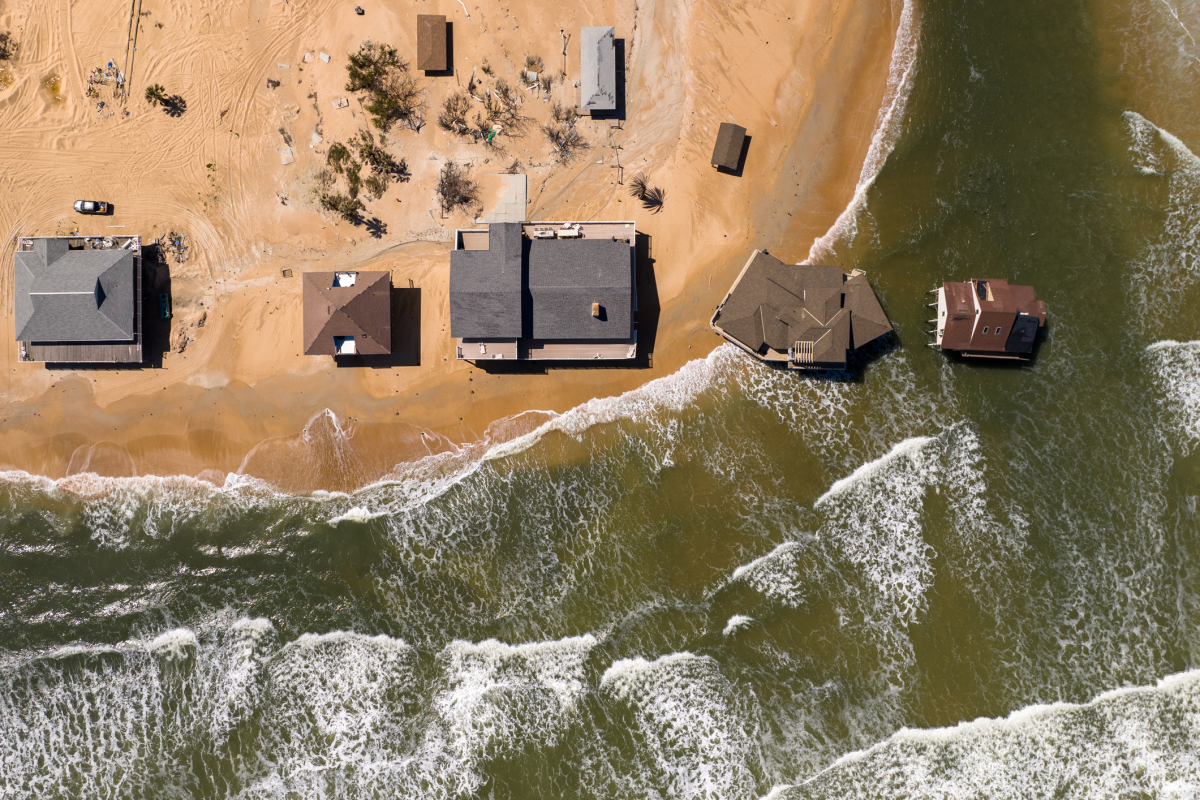Science
Sea Level Rise Threatens 100 Million Buildings, McGill Study Warns

A recent study led by researchers at McGill University reveals that over 100 million buildings in the Global South face significant risk from rising sea levels if fossil fuel emissions are not rapidly curtailed. Published in the journal npj Urban Sustainability, the research provides a comprehensive assessment of how long-term sea level rise could affect coastal infrastructure across regions including Africa, Southeast Asia, and Central and South America.
The study utilized advanced satellite mapping and elevation data to project the number of buildings that could be submerged at various levels of sea level rise over centuries. According to Prof. Natalya Gomez, a co-author of the study and Canada Research Chair in Ice Sheet–Sea Level Interactions, “Sea level rise is a slow, but unstoppable consequence of warming that is already impacting coastal populations and will continue for centuries.”
Significant Risks Even at Minimal Sea Level Rise
The research considered scenarios ranging from 0.5 metres to 20 metres of sea level rise. Alarmingly, even a modest rise of just 0.5 metres, which could occur under ambitious emissions reduction efforts, could inundate approximately three million buildings. In contrast, projections indicate that a rise of five metres or more is possible within a few hundred years if emission trends continue. Under such scenarios, the risk escalates dramatically, potentially endangering over 100 million buildings.
Many of these structures are located in densely populated, low-lying areas. The implications are dire, as entire neighbourhoods and vital infrastructure—including ports, refineries, and cultural heritage sites—would be at risk. “We were surprised at the large number of buildings at risk from relatively modest long-term sea level rise,” stated Prof. Jeff Cardile, another co-author of the study.
Implications for Urban Planning and Policy
The findings serve as a crucial warning for urban planners, policymakers, and communities preparing for the inevitable impacts of rising sea levels. Eric Galbraith, a professor involved in the study, emphasized that “Every one of us will be affected by climate change and sea level rise, whether we live by the ocean or not.” He noted that disruptions to coastal infrastructure could severely impact the global economy and food systems, as many essential goods and resources are transported through affected ports.
To aid in strategic planning, the study includes an interactive map that is accessible via Google Earth Engine. This tool allows decision-makers to visualize areas with the highest exposure to rising sea levels. The data can inform climate adaptation strategies, such as constructing protective infrastructure, modifying land use planning, or, in some cases, implementing managed retreat.
Lead author Maya Willard-Stepan, who conducted the study as part of an undergraduate research project, remarked, “There is no escaping at least a moderate amount of sea level rise. The sooner coastal communities can start planning for it, the better chance they have of continuing to flourish.”
This comprehensive study sheds light on the urgent need for proactive measures to safeguard vulnerable communities from the ongoing threat of climate change and rising sea levels.
-

 Education3 months ago
Education3 months agoBrandon University’s Failed $5 Million Project Sparks Oversight Review
-

 Science4 months ago
Science4 months agoMicrosoft Confirms U.S. Law Overrules Canadian Data Sovereignty
-

 Lifestyle3 months ago
Lifestyle3 months agoWinnipeg Celebrates Culinary Creativity During Le Burger Week 2025
-

 Health4 months ago
Health4 months agoMontreal’s Groupe Marcelle Leads Canadian Cosmetic Industry Growth
-

 Science4 months ago
Science4 months agoTech Innovator Amandipp Singh Transforms Hiring for Disabled
-

 Technology4 months ago
Technology4 months agoDragon Ball: Sparking! Zero Launching on Switch and Switch 2 This November
-

 Education4 months ago
Education4 months agoRed River College Launches New Programs to Address Industry Needs
-

 Technology4 months ago
Technology4 months agoGoogle Pixel 10 Pro Fold Specs Unveiled Ahead of Launch
-

 Business3 months ago
Business3 months agoRocket Lab Reports Strong Q2 2025 Revenue Growth and Future Plans
-

 Technology2 months ago
Technology2 months agoDiscord Faces Serious Security Breach Affecting Millions
-

 Education4 months ago
Education4 months agoAlberta Teachers’ Strike: Potential Impacts on Students and Families
-

 Education3 months ago
Education3 months agoNew SĆIȺNEW̱ SṮEȽIṮḴEȽ Elementary Opens in Langford for 2025/2026 Year
-

 Science4 months ago
Science4 months agoChina’s Wukong Spacesuit Sets New Standard for AI in Space
-

 Business4 months ago
Business4 months agoBNA Brewing to Open New Bowling Alley in Downtown Penticton
-

 Business4 months ago
Business4 months agoNew Estimates Reveal ChatGPT-5 Energy Use Could Soar
-

 Technology4 months ago
Technology4 months agoWorld of Warcraft Players Buzz Over 19-Quest Bee Challenge
-

 Business4 months ago
Business4 months agoDawson City Residents Rally Around Buy Canadian Movement
-

 Technology4 months ago
Technology4 months agoFuture Entertainment Launches DDoD with Gameplay Trailer Showcase
-

 Technology2 months ago
Technology2 months agoHuawei MatePad 12X Redefines Tablet Experience for Professionals
-

 Top Stories3 months ago
Top Stories3 months agoBlue Jays Shift José Berríos to Bullpen Ahead of Playoffs
-

 Technology4 months ago
Technology4 months agoGlobal Launch of Ragnarok M: Classic Set for September 3, 2025
-

 Technology4 months ago
Technology4 months agoInnovative 140W GaN Travel Adapter Combines Power and Convenience
-

 Science4 months ago
Science4 months agoXi Labs Innovates with New AI Operating System Set for 2025 Launch
-

 Technology4 months ago
Technology4 months agoNew IDR01 Smart Ring Offers Advanced Sports Tracking for $169










